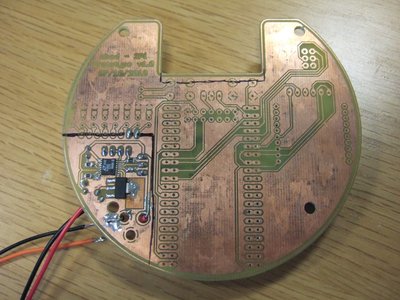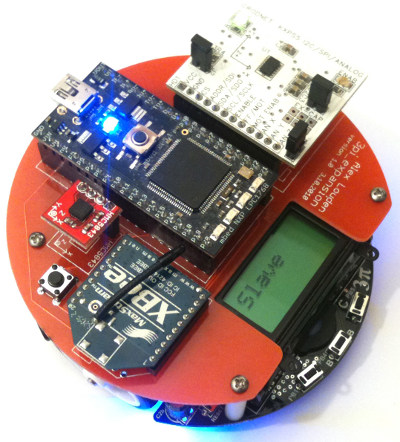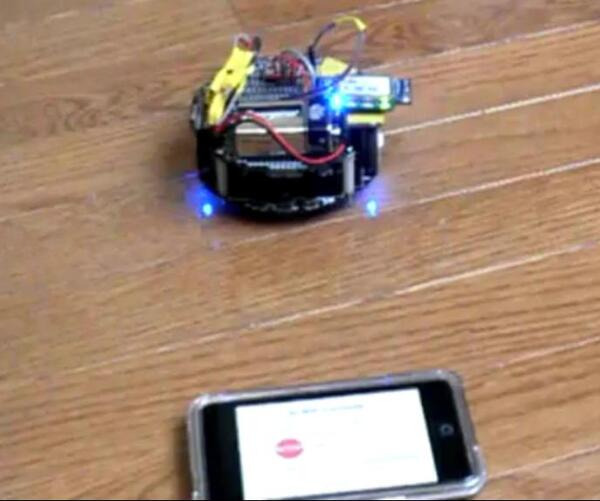Pololu Blog »
Pololu Blog (Page 88)
Welcome to the Pololu Blog, where we provide updates about what we and our customers are doing and thinking about. This blog used to be Pololu president Jan Malášek’s Engage Your Brain blog; you can view just those posts here.
Popular tags: community projects new products raspberry pi arduino more…
What's in a name?
At the risk of sounding like I’m telling you to eat your vegetables, I’m going to zoom out one more step from the last post about units and talk even more generally about the importance of names. Whatever you think of Juliet’s famous answer, the reality is that if you want to get someone a rose, or even just to talk about a rose, you need to know what it’s called. Naming things is a very powerful human skill that allows us not only to better communicate our thoughts but to better form our thoughts in the first place. Continued…
Know your units
How many volts of current are there in a bolt of lightning? That’s the kind of stupid question your local news anchor might ask while bantering with the weather guy. Perhaps your favorite cringe-inducing unit abuse is someone thinking light-years measure time or a model rocket enthusiast telling you that a newton-second is a little longer than a regular second. Of course, I made the same class of mistake when looking for a 1-amp battery, which I described in my previous post about battery capacity. That article addressed a specific instance of a general problem: not knowing or understanding units, which allow us to talk about and measure physical properties that we must understand whether we’re designing robots or baking cakes. Continued…
Understanding battery capacity: Ah is not A
My earliest electronics projects and my first robot were powered by regular alkaline batteries, and I didn’t think about current or the capacity of those batteries. The batteries were prominently labeled “1.5V”, and I was happy in my understanding that putting four in a battery holder got me to 6 volts; when the motors slowed down, it was time for new batteries. When I began designing my second robot, I found some 12V, 1A motors (what a “1-amp motor” might mean is a topic for another post) and promptly wasted many hours dragging parents and teachers to Radio Shack and car parts stores looking for a 12V, 1A battery. Continued…
Introduction to Jan's blog
My name is Jan Malášek, which is a Czech name, so the “J” is pronounced as an English “Y” (if you care, we can go over the last name in person, or you can consult your local Czech person). I grew up on the Big Island of Hawaii, spent five years in school in Massachusetts, and then moved to Las Vegas, Nevada to work on Pololu. I recently turned 30, and I’m still not the millionaire I had hoped to become at age 23 and then by age 25. Hitting 30 means it has been twenty years since I got started with electronics and ten years since I routed the first circuit board that said “Pololu” on it. Continued…
Jrk 12v12 TV Lift
This news report from the Philippines shows a custom TV lift using a Pololu Jrk 12v12 made by “gadget kid” Francisco Estrada III.
mbed.org m3pi cookbook
 |
This mbed.org cookbook page will help you get started using your m3pi robot with an mbed development board as your high-level robot controller.
Featured link: http://mbed.org/cookbook/m3pi
3pi PCB skeleton
 |
Alex Louden has released an open-source template for custom 3pi expansion boards for use with the Eagle PCB design software. The picture shows an example expansion with an mbed microcontroller, Xbee, and accelerometers.
Featured link: http://alexlouden.com/2010/3pi-pcb-skeleton/
Interfacing a FrSky telemetry receiver with a Baby Orangutan.
 |
Forum user erik46 wrote up a document (523k pdf) showing how to read FrSky telemetry data and display it with a Baby Orangutan. The whole setup is small and light enough to clip on to an RC transmitter. For more information, see his forum post.
iPhone-controlled 3pi Robot.
 |
In this project, a WiFi module is connected to a 3pi robot, allowing it to be controlled by an iPhone. Here is a video of the robot in action:
Featured link: http://forum.pololu.com/viewtopic.php?f=2&t=2816
Obstacle Avoider
This simple obstacle-avoiding robot by forum user TomatoWire is based on the Maestro and uses continuous-rotation servos and distance sensors. The robot is programmed using the Maestro’s internal scripting language, without the need for an additional microcontroller.
Featured link: http://forum.pololu.com/viewtopic.php?f=2&t=2756
















